- Opinion
- Posted
Green Electricity

Everyone knows that the cheapest way of doing something can turn out to be very expensive in the end. The decision to make Ireland ’s electricity system so reliant on gas is about to bear this principle out. By Richard Douthwaite
87% of the fuels to produce Ireland ’s electricity are imported. Gas is the most important, being burned to produce 48% of the country’s electricity. Its price has gone up from 33 pence sterling a therm last this time last year – a level which everyone thought was too high – to around 59 pence in early September this year when it was being quoted at 99-100 pence for early 2006 deliveries. If this tripling does take place, massive increases in electricity prices are inevitable.
Coal provides 26% of Irish electricity. The ESB is now paying $61 a tonne for it whereas in 2003, the average price of coal imported into the EU was $40. However, the cost of shipping has gone up from only $3 per tonne to $20 over the same period so the landed price of coal has effectively doubled and, because its CO2 emissions are worse than gas or oil, the extra permits needed to burn it add to its cost too. Even so, coal is still the cheapest fossil source of electricity in Ireland.
Heavy fuel oil, which provides 14% of the power supply, has gone up from $80 a tonne in 1999 to $260 a tonne today. Taking the three fuels together, the higher prices have added considerably to Ireland ’s import bill. In view of this and the fact that the price of electricity is seen as an important factor in this country’s international competitiveness, wouldn’t you expect the Government to have launched a crash programme to switch as much electricity production as possible away from imported fossil fuels and into Irish, non-carbon sources?
Well, there’s little sign of a rush to renewables going on. No contracts to connect windfarms to the high voltage transmission side of the grid offers were made between December 2003 and October 2004. The result was that a backlog of applications amounting to 2,500MW had built up by the end of the moratorium. Since then, connections have been offered to windfarms with a total capacity of 400MW. However, as Ireland’s total generating capacity is around 5,500MW and the transmission side of the grid will be unable to take more than 20% of its supplies from windfarms at least until an interconnector to Britain is available, the backlog will not be cleared for many, many years. “Many Irish windfarm developers are giving up and moving on to do other things,” Dr. Larry Staudt of the Centre for Renewable Energy at Dundalk IT (DkIT) says.
DkIT installed a 850kW wind turbine during August to meet its own electricity needs. It wanted to send any excess it generated into the grid but, in order to get permission to connect the turbine to its own electrical system and thus, indirectly to the grid, DkIT had to undertake not to supply the grid at all. This was so that no-one could be accused of allowing it to jump the backlog queue and means that the grid will not get non-fossil electricity worth an estimated €50,000 a year for an indefinite period. Yet if a company had wanted to buy that amount of power, wouldn’t it have been able to connect up almost straight away?
It is not just wind projects that are having trouble getting connected. The Camphill Community in Ballytobin, Co. Kilkenny, had to burn off surplus gas from its biogas digester for six years before it received permission in August to use the gas to power a generator and sell the electricity into the lower voltage, distribution side of the grid. A spokesman for the distribution grid operators, ESB Networks, told Construct Ireland that the delay had arisen because the distribution side was not configured to take supplies from small generators. He knew of a community in Co. Donegal which had been unable to get a connection for a small CHP plant for that reason.
He added that before many small generators could be connected, the balancing and configuration of the grid would have to be changed and this would need a Government policy decision. “I’m not aware of any moves in that direction” he said. “Besides that, the regulator would have to set out the rules and we’d have to develop in-and-out metering.”

Certainly, the grid as currently structured is not suitable for developing renewable energy sources. The transmission side was built to take the output from ten or twelve large fossil-fuel-fired power stations at high voltage to over a hundred sub-stations around the country. These sub-stations reduce the power to a lower voltage and feed it into the distribution grid which takes it to consumers.
The concentration of power generation in around a dozen places may not continue in the future because fossil-fuel-fired power stations are likely to be phased out entirely over the next fifty years and they may not be replaced by stations which generate power in the one place on the same scale.
One reason why fossil-fuelled stations are likely to be phased out is the need to slow climate change. For all practical purposes this means that they will have to cut their output because the only other ways that they can reduce greenhouse emissions without doing so are to increase operating efficiency, something which is very hard to achieve without a massive investment in new plant, or to use sequestration. The latter is the removal of the carbon dioxide from a power station’s flue gases before they are allowed into the atmosphere and the subsequent compression of the gas so that it can be injected into a disused oil or gas well. However, as the process is untried, expensive and consumes a lot of energy itself, it can probably be ruled out.
Another reason that big fossil fuel-fired power stations are likely to close is, of course, the steady exhaustion of the world’s oil and gas reserves. Oil, in particular, can be expected to rise in price particularly quickly as no other fuel is quite as suitable for transport purposes. There is, of course, plenty of coal around the world but its use would lead to a sharp rise in greenhouse emissions.
A third reason is that big, thermal power stations are very inefficient. At the moment in Ireland , only 40% of the energy in the fuel they burn gets converted into electricity. The rest is lost as heat. And of the power that goes into the grid, 14% is lost on its way to the consumer. This means that only 34% of the energy in the fuel is actually delivered. The delivery is also very expensive. The costs of operating and maintaining the grid amount to around 4 cents for each kilowatt-hour of electricity that passes through it. This is about as much as it costs to generate the electricity in the first place.
Replacing the handful of big fossil-fired power stations with hundreds of much smaller ones seems a much better option than building equally large stations using nuclear or renewable energy sources. This is because most sources of renewable energy – solar, small-scale hydro and biomass - are dispersed by nature and either cannot be assembled in one place or, as with biomass, would require the use of too much energy for it to be worthwhile doing so. As a result they can only be used to produce small amounts of electricity in a large number of places. This makes them unsuited to using the transmission grid. The small generators using them would either feed into the distribution side of the grid or bypass it entirely and distribute their output through their own wires direct to their customers.
Generating electricity from biomass is likely to become very important as, unlike solar and wind, it offers the prospect of a continuous power supply. It also offers heat, and s mall, local electricity generation would enable much of the heat to be sold so that up to 90% of the energy in the fuel will be used by consumers in comparison with the 34% from a conventional power station. In a period of scarce, expensive fuel, this difference will matter a lot.
Nevertheless, even if it stays non-nuclear, Ireland will have some big electricity producers feeding the transmission grid. Massive onshore and offshore windfarms will continue to be built and there could even be an offshore tidal lagoon in Galway Bay . However, these supplies would inevitably be intermittent and, to ensure continuity of current, the country would either have to make a huge investment in pumped storage and/or flow batteries, or in interconnectors with the British grid and through that to the continental one.
The cost of providing the storage capacity, or that of the interconnectors and the line losses which would occur when power was brought into Ireland from overseas, would have to be added to the unit cost of power from the giant windfarms. This might push the delivered cost of their output up above that of much smaller scale renewable producers who fed directly into the distribution side of the grid or supplied their communities directly through their own wires.
I therefore think that in fifty years’ time, the bulk of the electricity needs of Ireland ’s cities and larger towns will be met with power brought in at great cost from giant windfarms in Ireland and all the way down Europe ’s Atlantic coast. The rest of the country may well be served at less cost by small producers feeding directly into the distribution grid or using their own mini-grids. These producers would use several sources for their power, three of which - small scale hydro, and CHP from biogas and from biomass - have the potential to provide a continuous supply of power without storage capacity being required.
Biomass and biogas can only supply a very significant part of Ireland ’s energy needs if local electricity generation is encouraged. The bar chart below shows that biomass has the potential to match the total amount of electricity available from both onshore and offshore wind by 2020 if the Government sets a target of getting 30% of the country’s electricity from renewables by that date. Note that the heat from the biomass and biogas would be in addition to this energy amount. Given that localised generation is much more efficient and thus has the potential to supply cheaper heat and power, it would be a serious mistake for the Irish Government and the electricity regulator to attempt to prevent the development of local mini-grids in the interests of preserving an outdated, centralised, top-down system of electricity supply.
The potential for electricity from biomass and biogas

(Click to view large image)
If the Government sets an ambitious target for obtaining a high proportion of the country’s electricity from renewables, biomass and biogas could provide as much as all other sources combined. Local generation plants would be required to make this happen. Source: Claus Huber et al, 2004.
Sustainable Energy Ireland apart, the level of official opposition to the establishment of local mini-grids seems formidable. Nevertheless, a developer in County Offaly , Martin Langton, is pushing ahead with plans for grids in two neighbouring villages, Cadamstown and Ballyboy. In Cadamstown, which is on the road between Mountmellick and Birr, Langton is planning a 60-bed hotel, a hostel for walkers, a fitness centre, some business units and 36 houses. These have been designed for him by the eco-architect Emer O’Siochru. Langton wants all the energy used in the buildings to come from local sources as this will give the hotel and hostel a huge competitive advantage if fossil fuel prices stay high. In addition, the availability of energy at a guaranteed price should make the business units and the houses more attractive.

“This is why having a local grid is so important” Emer O’Siochru says. “In the past, mills and other manufacturing activities were located where energy was available. There were six mills on the Silver River between Cadamstown and Ballyboy. The coming of fossil energy made those power sources irrelevant as energy could be taken to the place of production rather than production going to the source of the energy. Energy now goes to anywhere where labour is cheap, which is why so much is now being made in China.
“The coming oil and gas peak will change this. The availability of local energy supplies will become important again unless the Government forces local power producers to sell everything into the grid. In that case, rural areas would not be able to benefit from their own resources by setting energy prices which make it attractive for firms to locate there.”
The Cadamstown houses and hotel complex will get hot water and electricity from a woodchip-fired combined heat and power (CHP) plant. The woodchips will be produced from waste from the forests above the village. Some of the chips will be dried when there is surplus heat and turned into pellets for sale in the area.
The electricity supply will be supplemented at times by a wind turbine on a hill near the site. “The wind electricity will be very cheap and people will be able to use it for refrigeration and for charging the batteries of electric cars,” O’Siochru says. At a later stage in the project, the wind electricity may be stored by pumping water from the Silver River up to a small dam. It would flow back through a turbine and generate power at times of local peak demand or when it could be sold profitably into the grid.
In Ballyboy, Langton is a partner in a development of sixty houses which will be heated and lit with hot water and electricity from a CHP plant burning biogas from a digester. This will take in slurry from the farms in the area. Some of the gas may also be bottled to be sold to people living outside the area served by the water and power grids. In both villages, the power plants will be owned by the people getting supplies.
The financial figures for both developments look very good. If their power plants are able to sell all the electricity and heat they are capable of producing, their combined output will be worth €700,000 a year. This is money that would otherwise have been lost to the two communities instead of creating incomes within them.
O’Siochru hopes that the path being blazed in Cadamstown and Ballyboy will be followed in other villages. She is working with Irish Rural Link and Offaly County Council to assemble an application for funding under the EU’s Concerto programme to enable this to happen more easily. If the application is successful, another eight Offaly villages will get their own locally-owned renewable energy plants over the next five years.
- wind farms
- hydro
- green energy
- electricity
- Feasta
- Richard Douthwaite
- emissions
- fossil fuels
- biomass
- biogas
Related items
-
 Much ado about nothing
Much ado about nothing -
 Decarbonising buildings “most important issue” – Climate Change Committee
Decarbonising buildings “most important issue” – Climate Change Committee -
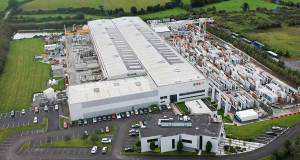 Techrete aims for net zero carbon by 2030
Techrete aims for net zero carbon by 2030 -
 Grant invests in biofuel tech for oil boilers
Grant invests in biofuel tech for oil boilers -
 Oil heating sector pivots to biofuels, but green groups raise concern
Oil heating sector pivots to biofuels, but green groups raise concern -
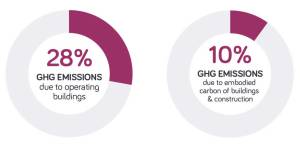 Architects call for urgent climate action ahead of COP 26
Architects call for urgent climate action ahead of COP 26 -
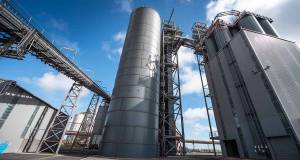 Ecocem gets €22m investment from Bill Gates's climate fund
Ecocem gets €22m investment from Bill Gates's climate fund -
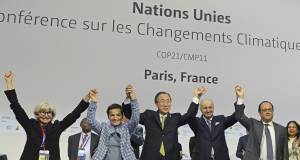 Campaign launched to tackle whole-life environmental impact of buildings
Campaign launched to tackle whole-life environmental impact of buildings -
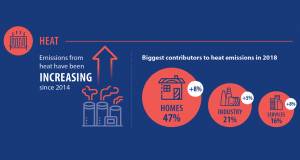 Heating emissions increase as Ireland falls short on decarbonisation
Heating emissions increase as Ireland falls short on decarbonisation -
 Draft new Part L energy efficiency regulations “disappointing”, critics say
Draft new Part L energy efficiency regulations “disappointing”, critics say -
 New research finds air pollution particles in human placentas
New research finds air pollution particles in human placentas -
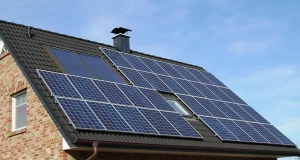 Policy for zero, or zero policy?
Policy for zero, or zero policy?

